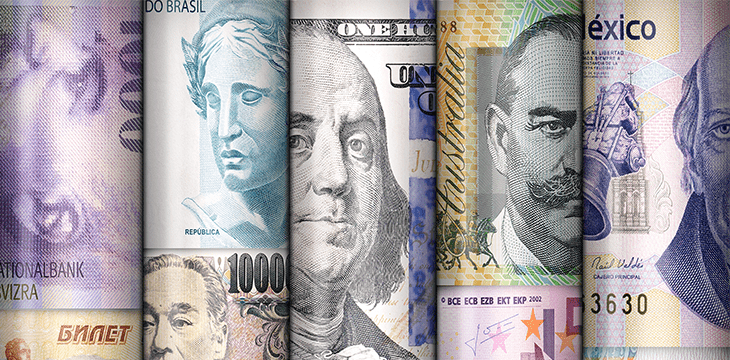|
Getting your Trinity Audio player ready...
|
What are the specific qualities that make something good money? In this article, Marquez Comelab goes through a brief history of how money evolved from 11,000 years ago until today to determine if a new, modern-age currency like Bitcoin is a good form of money and improves the current monetary system.
Human beings began using money as far back as 11,000 years ago. During that time, money has roughly evolved in three stages:
1. Commodity Money
2. Representative Money
3. Fiat Money
Commodity Money (9000 BCE to Present)
From about 9000 to 6000 BCE, early human civilizations started using money. The earliest known form is cattle. Cattle had value because it was helpful in many ways: they helped till the fields and produce milk. Apart from being the first known form of money, they are also the earliest form of capital: a resource exploited for production. The word ‘cattle’ comes from the same Latin roots that gave us the term ‘capital.’
Afterward, humans turned to other agricultural products to use as money. Grains like barley and rice had value because they were food, so people were willing to accept them as payment for goods or services.
Later, people began using metals as a form of money. Unlike vegetables, coffee or chocolate, they did not spoil or rot. They remained valuable even when not being used as a medium of exchange. Metal could be melted down and re-shaped as tools, jewelry, or weapons. This property helped them retain their value. Further, they could be divided into varied sizes to settle transactions of equally-varied amounts. In the form of metal coins, money became more portable and transferrable.
Of all the metals, gold has been the most revered by humans. Gold was, and still is, valued for its beauty and rarity, with its brilliant yellow resembling that of the sun. People around the world were attracted to it and wanted to possess it. Unlike iron which corrodes and rusts, or copper that turns green, gold has this mysterious quality of remaining pure and unchanging. People associated such properties with something divine or magical and consequently embellished their temples and tombs and made idols with gold. In addition, gold is scarce, which has helped maintain its value. People were happy to receive gold as payment for goods and services because they were sure others would accept it for things they would need in the future. These qualities explain why gold functioned so well as money for thousands of years.
Commodities utilized as money can be characterized as having value because they have another use apart from being a medium of exchange. In other words, they have ‘use-value’ or ‘intrinsic value,’ like ‘melt value’ in the case of metals.
Today, people still use commodities as cash when their national currencies devalue, like when Russians paid salaries in vodka when the Ruble’s value collapsed. Cigarettes have also become commodity money in places like prisons, where people find themselves in situations where they cannot get money in the form of their national currencies1.
Representative money (dominant in 1944 to 1971)
Even though gold and silver coins were more portable and convenient to carry around than most commodity money, it became problematic when people needed to travel longer distances or pay more considerable sums to settle transactions. It was not safe to transport large bags of gold or silver.
This gave rise to a new industry, where people provided secure storage services for gold and other valuables. They started issuing paper receipts, promissory notes, or certificates that verified a person’s access, ownership, or control over something valuable—like gold stored in a vault, protected and secured from thieves and bandits. So instead of exchanging commodity money like gold or silver, it was more convenient for people to exchange these pieces of paper for another good or service since they stood in place for the underlying assets they represented.
Representative money was what much of the world used when money could be swapped directly for a specified amount of gold or silver. The Gold Standard is based on the idea that money represents how much gold a nation has in its vaults. Therefore, paper money could be exchanged for gold2. This has been the basis for our international monetary system called the ‘Bretton Woods system’ that began after World War II. But when the U.S. stopped allowing the U.S. dollar to be convertible to gold in 1971, the U.S. dollar and all other national currencies were no longer backed by gold. They became ‘fiat’ money.
Fiat money (dominant from 1971 to the present day)
‘Fiat’ is a word derived from Latin and means “let it be done” in the sense of an order, decree, or resolution. Indeed, fiat money is declared as money by a central authority, usually the government. China introduced the first fiat money in the 11th Century. Today, all nations use fiat money, like the U.S. Dollar, the Japanese Yen, and the Euro.
Commodities adapted as money have value because they are helpful. Representative money represents direct access, ownership, or control over something useful or valuable. On the other hand, fiat money is not useful on its own. It only has value because it functions as a medium of exchange.
Fiat money is created in a complicated and elaborate process beyond the scope of this article. For simplicity, however, we can say that a nation’s government and its central bank create fiat money, expecting that it will all be paid for later by taxpayers.
The strengths and weakness of fiat money
Compared to earlier forms of money, Fiat money is easier to recognize. It is generally better accepted than, for example, dog teeth, which were used as money in the Admiralty Islands3. It is easier to carry and transport from place to place (portable). It is durable, which means you can store it longer than grains. It can quickly and accurately be divided to settle a transaction, whatever the amount. It is also homogenized and standardized: a $50 note looks like another $50 note. If something costs $100, we know to give the seller two $50 notes. The transaction is much faster because we do not need to validate each note’s value.
Perhaps the essential benefit fiat money provides for the government is ‘borrow’ money from its citizens. This is how governments prevent societies from spiraling out of control during the current pandemic. By printing money, it can reallocate resources needed to contain the spread of the virus and support its citizens who can no longer work or continue their business.
Unfortunately, for the same reason, giving governments and their central banks the power to print money is also the cause for the most severe criticisms of fiat currencies: they devalue over time. We observe this phenomenon when we notice the price of goods and services increases year after year. It is the inflation of a currency: Inflation, in short. The history of fiat money shows that governments have repeatedly fallen prey to printing too much money, which has crashed economies, inflicted turmoil and suffering upon people through severe hyperinflations.
Qualities of good money
We can identify distinct qualities that make something an excellent candidate to adapt to function as money.
1. Generally accepted as money – It must be easily recognizable and generally accepted as money. Dog teeth might have a popular form of money in the Admiralty Islands, but most people in other countries would find them disgusting.
2. Portable and transferable – It must be easy to transport and transfer/give to people to settle transactions. Transporting cattle to pay for a house in the next city is hard work and could take days.
3. Durable – It should last a long time and not decay, rot or spoil.
4. Divisible – Easy to divide to whatever amount to settle transactions. We cannot be scraping bits of a clump of gold on a weighing scale in the supermarket to pay for a kilo of meat.
5. Fungible, homogeneous and standardized – Good money should be uniform and identical. A dollar note should be equal in value to another dollar note.
6. Scarce – It must be scarce and hard to get. People will not accept soil or sand as money because they are abundant in most places. Scarcity helps maintain the value of a currency.
7. Stability of value – It should be stable in value, determined by the supply and demand for the object used as money.
8. Secure and authentic – It must be hard to steal and not easily forged.
Conclusion
For about 11,000 years, humans have used multiple objects as money, classified broadly as commodity money, representative or fiat. Looking at these forms of money, we can conclude that good money should have a stable value, be generally recognized; portable and transferable; durable; divisible; fungible, homogenous and standardized; scarce; authentic and secure. In knowing what these specific qualities are, we now have criteria to evaluate and test whether Bitcoin would not only be a good form of money but whether it can also drastically improve our current monetary system.
***
References:
[1] We have explored this further in a previous article titled, “What is money and can Bitcoin really be used as currency?” (First published: 31 August 2021).
[2] The Silver Standard also exists.
[3] Jack Weatherford, The History of Money (New York: Three Rivers Press, 1997), p4

 01-08-2026
01-08-2026 




